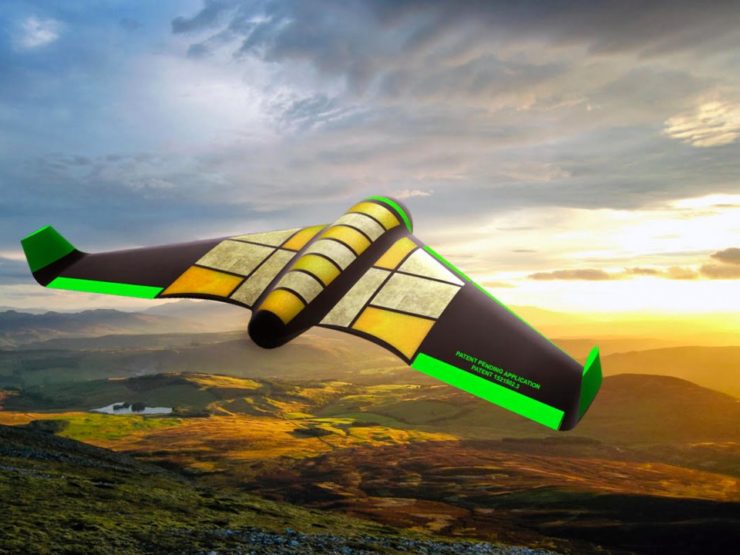The Next Humanitarian Aid-Delivering Drone is Going to Be Edible!

Windhorse Aerospace’s “Pouncer.” Troy Rice / Across 110th Ltd
An aftermath of the 2015 Nepal earthquake left people living in mountain villages waiting for emergency food for weeks. Landslides had destroyed the roads and the limited helicopters in the country couldn’t always safely fly where they were required.
Delivery drones would have come in handy. But Nigel Gifford thinks he has an even better answer. Gifford is the chairman and founder of Windhorse Aerospace and is also part of the team that developed Facebook’s solar-powered UAVs. He has added an interesting twist to the whole drone delivery game by developing a UAV that can not only deliver food and medical supplies but is also partially made of edible materials!
His drone prototype called the Pouncer is developed for one-way delivery missions, and can be broken down and re-purposed when it lands. The lightweight plywood frame can be chopped to be used as a kindling for a cooking fire. The wings are made of edible materials and the protective covers around the supplies can be used as shelters.
Gifford revealed that the surface of the drone’s wings is covered in salad bowl materials. He anticipates that as they continue to develop the design, parts of the drone’s frame and even electronics will also be made of edible materials. With this in mind, the designer aims at keeping electrical components to the absolute minimum.
The company believes that using their drones will be cheaper and more precise than the current aid deliveries facilitated parachute drop. The drones are also made to be dropped from planes. Apart from precision dropping, the drone’s design helps it to glide for over 25 miles from an airplane without using a motor. This means the crew that deploy the drones can stay at a safer distance especially in conflict zones and other dangerous to fly areas.
Gifford revealed that the food delivered needs to be religiously and culturally acceptable to the recipients. He notes that many agencies deliver food that the people won’t eat. The developer figures that self-sustaining for-profit model would work more efficiently than the nonprofit model, and so he went for the former. In addition to food, the Pouncer drones can also deliver medical and other critical supplies
The development hasn’t been without challenges though, and one of their major challenges was getting certified by some regulators, keeping in mind that safety is a serious matter of concern these days. Additionally, the agencies need to be sure that the drones will be reliable and easy to use. The company plans to develop three models that can travel different distances and carry different weights.
|